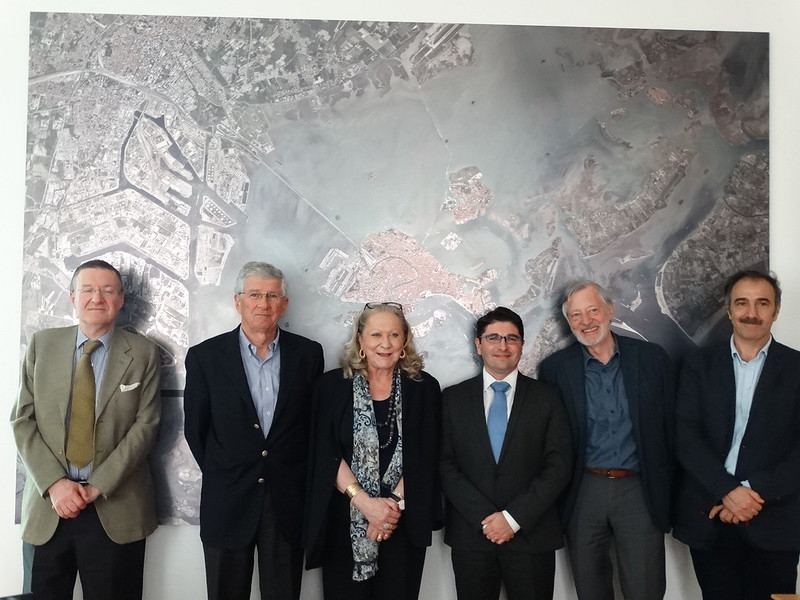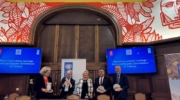Europa Nostra and EIB Institute on mission to Venice
On 29-30 March 2017, experts from Europa Nostra and the European Investment Bank Institute were in Venice for a two-day mission related to Venice and its Lagoon, listed as THE Most Endangered Heritage Site in Europe in 2016, following a nomination made by Italia Nostra. The task force was composed by Sneška Quaedvlieg-Mihailović, Secretary General of Europa Nostra, Rossana Bettinelli, Board Member of Europa Nostra, Pedro Ponce de Leon, Vice-President of the Scientific Council of Europa Nostra, together with Thomas Hackett and Jose Tomas Frade, both Technical Consultants provided by the European Investment Bank Institute.
During the mission , the task-force met with local and national authorities – including Roberto Linetti, Superintendent, Pino Musolino, President of the North Adriatic Sea Port Authority, Massimiliano De Martin, Venice Alderman for Urbanism, Sustainable Cities, Built and Natural Environment, and Paola Mar, Venice Alderwoman for Tourism, – as well as representatives from civil society organisations and other stakeholders.
Covering 550km², the Venice Lagoon is the best-known lagoon in Europe and one of the most important transitional ecosystems in the Mediterranean. It is in itself a very complex and fragile environmental and anthropogenic system. The historic city of Venice is comparable in its complexity and fragility, even if for different, albeit interconnected, reasons. When the two “systems” are combined, the intricacy and sensitivity of the pair are probably unequalled elsewhere in the world. Any measure or action taken in one “system” inevitably affects the other and therefore the two should not be seen in isolation.
During their mission, the experts from Europa Nostra and the European Investment Bank Institute acknowledged that the task of the principal public actors is further complicated by the diversity of opinions, and even sometimes contradictory advice, from a variety of stakeholders and sources – those in the scientific and academic communities, citizens, heritage professionals, commercial/economic actors, and institutions. One of the key tasks of the public authorities concerned should be to build an inclusive governance framework based on direct consultation with a broad spectrum of stakeholders, both public and private, and transparent and complete communication on related decision-making processes and agreements. The past and present controversies are illustrative of the need for such a framework.
The key findings and recommendations of the mission to Venice will be published in a report by July 2017 when the 41st session of the World Heritage Committee of UNESCO will take place in Krakow.







